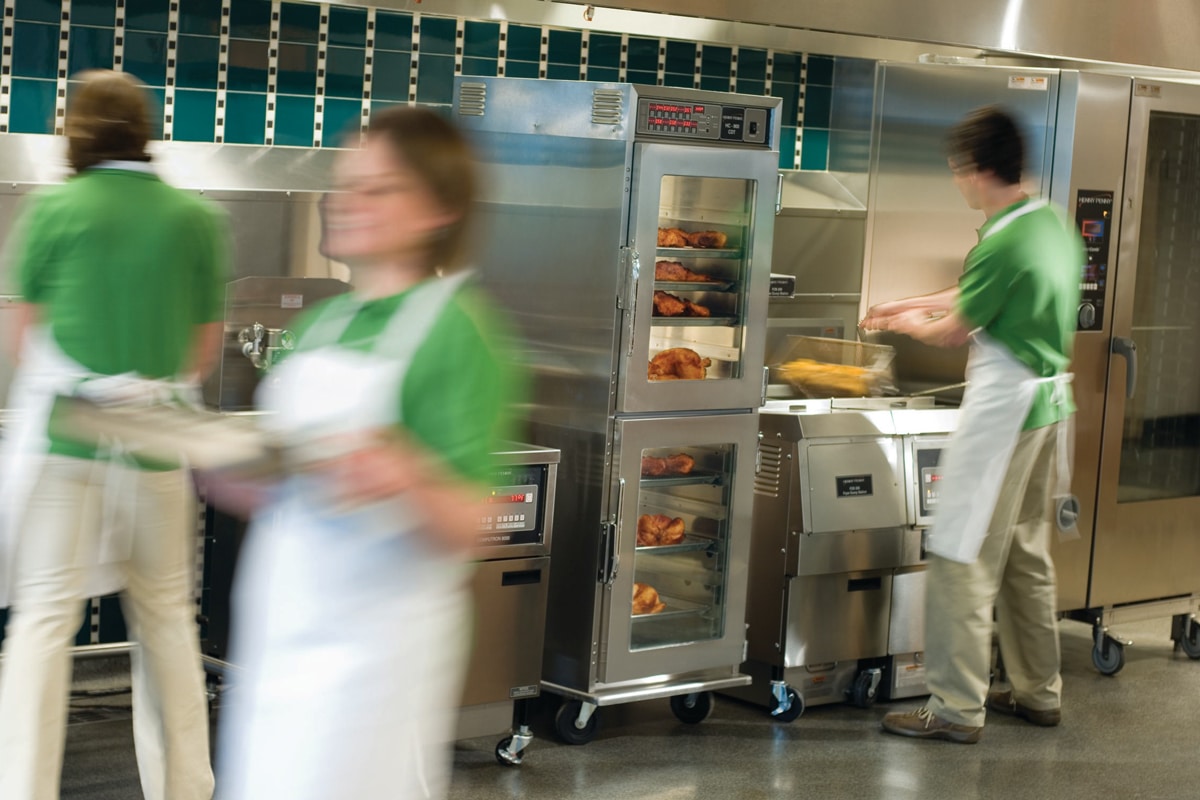Though the restaurant industry has faced many major changes amid the COVID-19 pandemic, one of the biggest shifts has been in guest traffic patterns. Not only have diners embraced off-premises channels at an unprecedented rate, but changing commutes among the move toward remote work and the rise of flexible work hours have caused peak order times and volumes to fluctuate. Yet while restaurants have attempted to continue offering the same speed of service and consistency and quality of product they are known for in the midst of these challenges, smaller crews and staffing shortages have exacerbated the issue.
“In the past, restaurants were more focused on the in-house dining experience than they were on delivery and quick service” says Gregg Brickman, corporate executive chef at Henny Penny, “but, unfortunately, because of the pandemic, the way consumers and restaurants must operate has changed.”
Before the pandemic, Brickman says, restaurants knew when they could prepare for a rush and plan to staff five cooks to execute the orders. However, now, surviving a peak service time often involves more planning ahead. Rather than cooking to order, he says restaurants can more aggressively set pars and prep orders in advance than they might have prior to COVID-19, and thanks to advanced holding cabinet technology, those meals can still be served as fresh as if they were going straight from fryer to plate.
“Henny Penny holding cabinets allow restaurants to serve consistent, quality items while also easing pressure on the kitchen,” Brickman says. “And, when you don’t have as many staff members in the kitchen due to staffing levels or pandemic restrictions, the cabinets can actually relieve as much pressure as adding another employee or sous chef.”
While he notes older style holding cabinets might have previously dried out or hardened food, Brickman says the secret to holding food successfully, is Henny Penny’s newer technology, which offers precise temperature and moisture controls that extend the life of food without any discernible difference in quality.
Additionally, the Henny Penny team will work with each brand to test the appropriate temperature and humidity levels for their products in the Henny Penny test kitchen or inside the restaurant’s facilities. Then, Brickman and the Henny Penny team precisely program each cabinet’s settings to ensure quick-service brands will serve high-quality meals to customers regardless of the hold time.
“A lot of people we’ve worked with from major brands have been shocked to see the results that can be achieved with our holding cabinets,” Brickman says. “They don’t expect the product to be as consistent and flavorful as it is even after batch cooking and holding, but the quality is so good, they know customers will still think their orders are being served right out of the fryer.”
Best of all, Henny Penny offers a wide range of cooking and holding equipment, so restaurants can find the best equipment for their staffing, layout, and cooking needs, and the company prides itself on helping each brand tailor its approach to these challenging volume situations.
“Not every piece of equipment is built for every customer,” Brickman says. “When we work with a new customer or concept, my culinary team and food scientists help analyze their situation and narrow down the specs so each restaurant can get the most out of each warming cabinet, fryer, or combi oven. Then we not only customize that equipment for the brand or store, but we also follow up over time to make sure it’s still working for them. We want to build long-term relationships so we can help each restaurant achieve the results they are looking for no matter what challenges they face.”
To learn how holding cabinets can help your restaurant, visit the Henny Penny website.
By Peggy Carouthers













